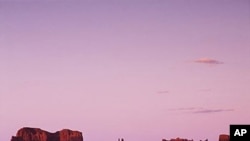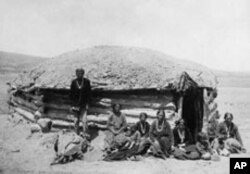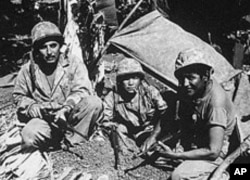The largest tribe of American Indians lives on a 6-million-hectare patch of desert and scrub brush that covers much of northern Arizona and New Mexico. They are the Navajo - often spelled Navaho - whose ancestors walked that land at least a century, perhaps many centuries, before the first Europeans arrived.
The Navajo Nation has its own elders, laws, tribal government, and police force that is vigilant at enforcing speed limits. The Navajos have their own red-rock tribal park, called Monument Valley, that's every bit as spectacular as U.S. national parks elsewhere in the Southwest.
Passing through the Navajo Nation, one sees tiny, isolated cabins and a few traditional hogans, which are log-and mud structures whose doorways face the morning sun.
Out back, you'll often see small flocks of sheep or goats being herded by riders on horseback. The goat, sheep, and horse were all introduced by the Spanish, who sent missionaries into the area as early as 1630 and armies soon thereafter.
Click to Listen:
Tiny towns with names like Kayenta and Mexican Water are little more than dusty crossroads with gasoline stations, small restaurants, and gift shops selling woven Indian blankets and turquoise jewelry. At taverns, you can order mutton stew and deep-fried bread.
In the heart of the Navajo Nation, in the middle of the high desert many kilometers from any town, one finds the only point in America where four states come together. Naturally it's called Four Corners. Nearby, you'll find the Painted Desert with sand of many colors, and the world's largest site of petrified prehistoric rock.
The Navajo have many heroes, including warriors who fought efforts by the U.S. Army to force them from their homes and onto a miserable reservation more than a century ago. Heroes of more recent vintage include the Navajo Code Talkers. They were tribal members who came up with an unbreakable code in their complex language that was adopted by American forces in the Pacific during World War II and used to confound the Japanese.
But the Navajo homeland is harsh country, where it's hard to find good-paying jobs and all too easy to fall sway to alcoholism and despair. As a result, many young Navajos have left to seek work in big cities throughout the Southwest. Others, though, have forged rewarding careers in tribal schools, small businesses, and a big, new, thriving hotel in Monument Valley.









